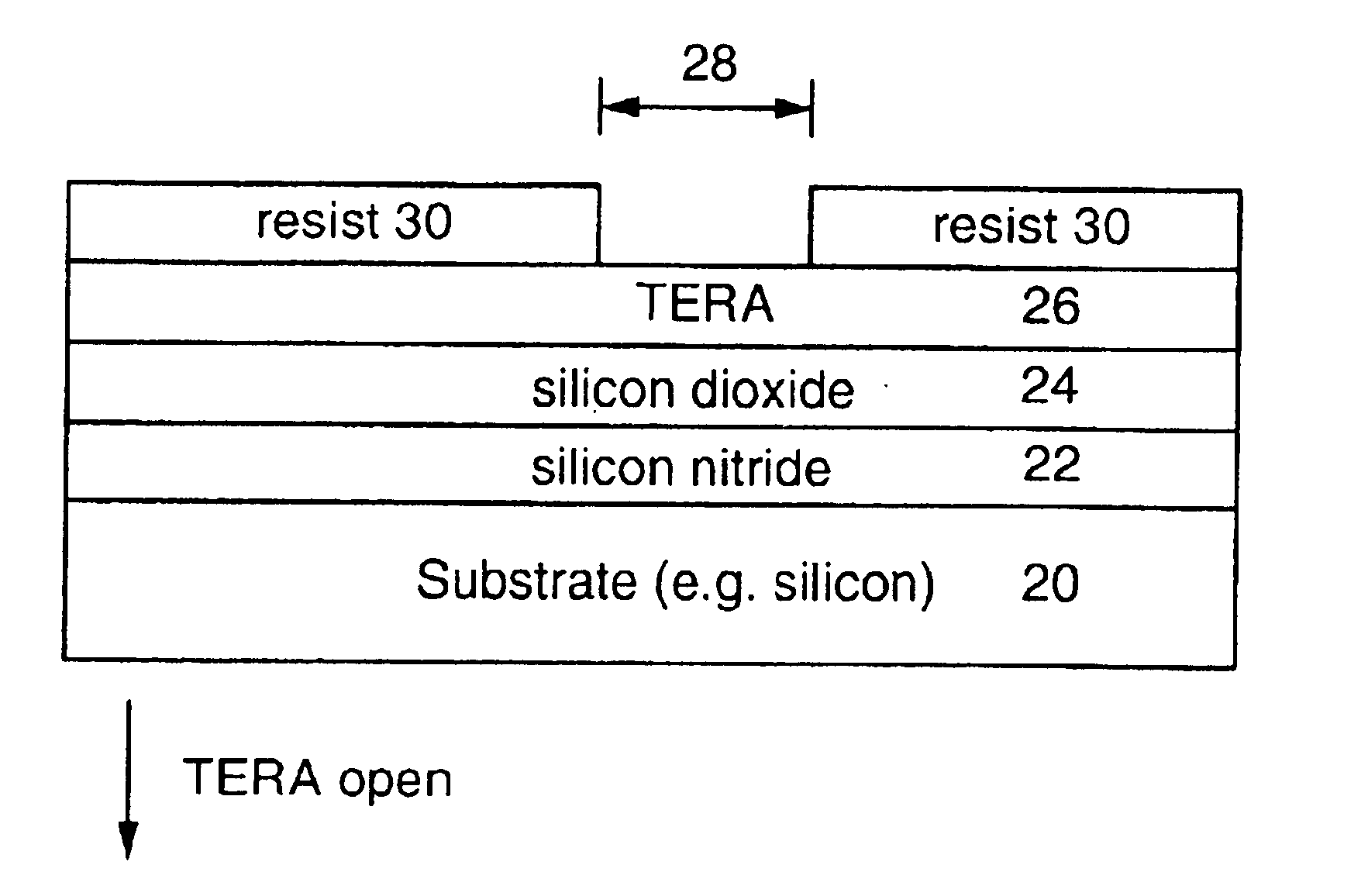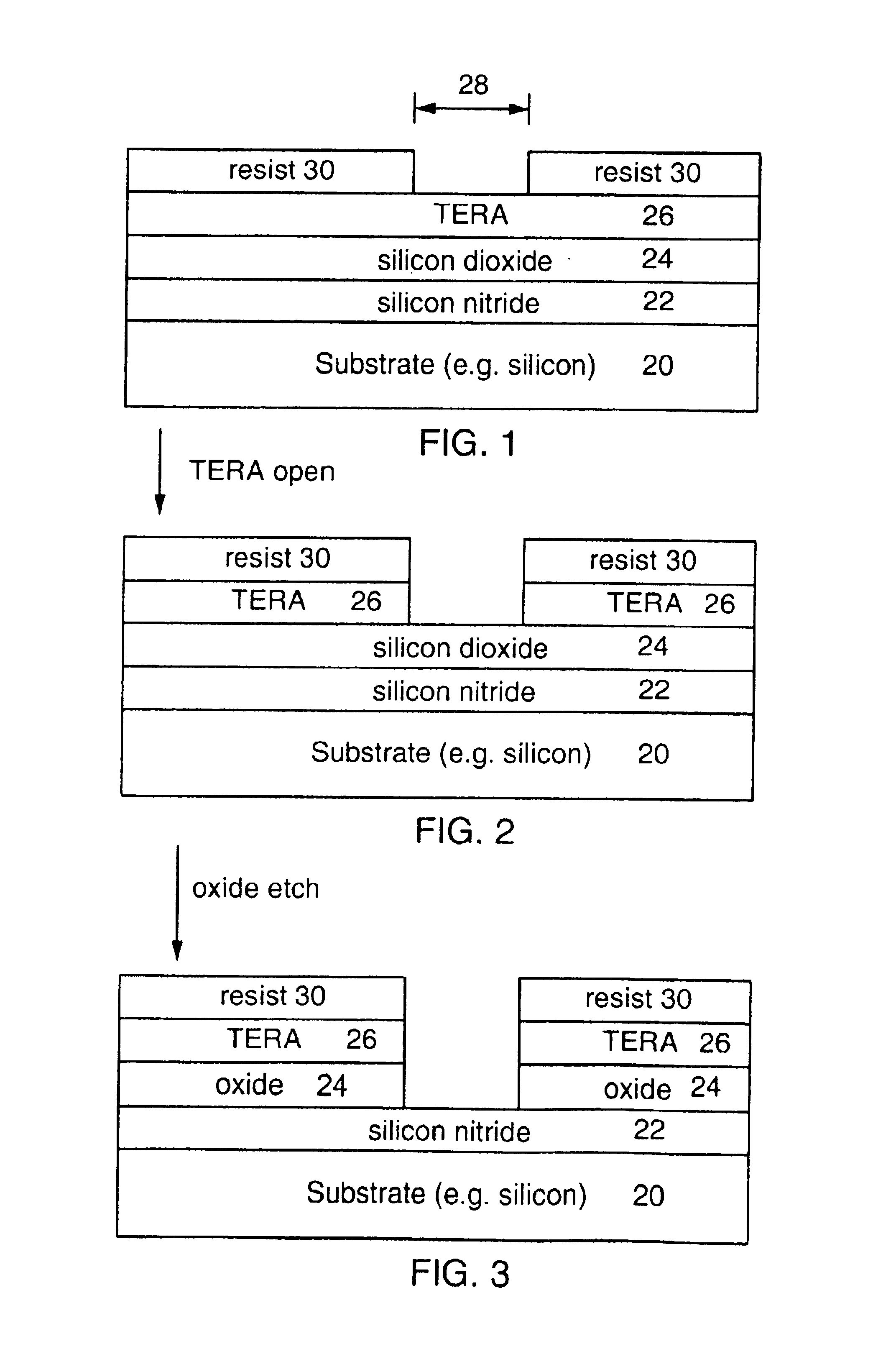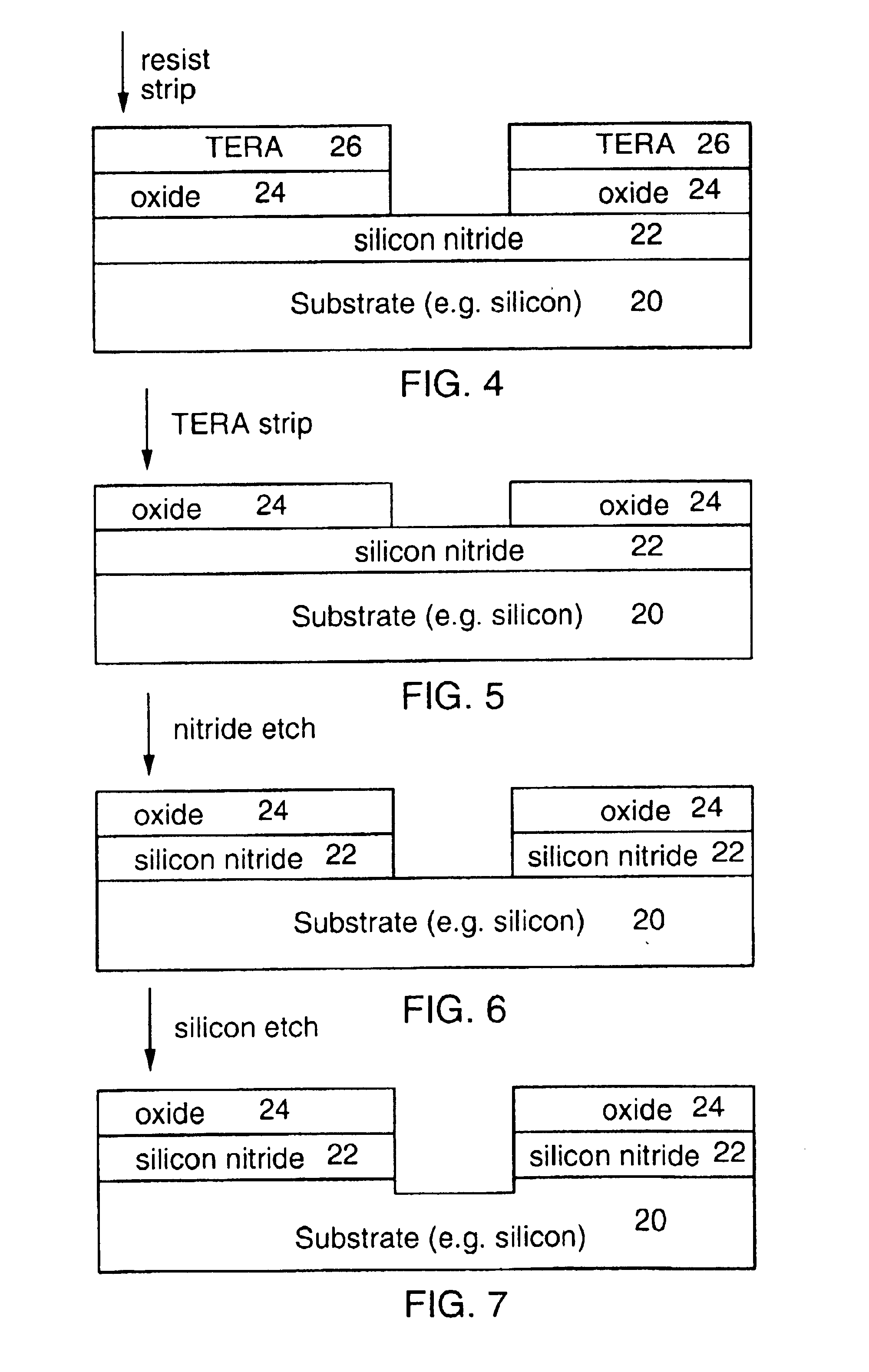In-situ plasma etch for TERA hard mask materials
a technology of tera mask and in-situ plasma etching, which is applied in the field of semiconductor processing, can solve the problems of increasing the cost and complexity of using tera hard mask/arc layers, the difficulty of in situ stripping of tera mask materials and the difficulty of stripping in situ when fluorine based processing is used
- Summary
- Abstract
- Description
- Claims
- Application Information
AI Technical Summary
Benefits of technology
Problems solved by technology
Method used
Image
Examples
Embodiment Construction
[0022]The present invention provides a method for etching TERA materials in a system employing or compatible with fluorine based etching plasmas. It has been discovered that the addition of nitrogen to an oxygen plasma provides a high etch rate of TERA materials. Oxygen and nitrogen plasmas are compatible with fluorine-based etching systems (that is, they do not erode silicon mechanical components), so the wafer does not need to be removed from the fluorine system to remove the TERA layer. Nitrogen / oxygen plasmas also do not cause formation of undesired profiles in underlying oxide and nitride films. Without being limited to a specific mechanism for this effect, it is believed that the enhanced etch rate caused by adding nitrogen to an oxygen plasma is caused by weakening or breakage of silicon-carbon bonds in the TERA material. In the present inventive method, carbon is removed from the TERA film due to the presence of nitrogen, rendering the film more etchable in the oxygen plasma...
PUM
| Property | Measurement | Unit |
|---|---|---|
| power | aaaaa | aaaaa |
| energy | aaaaa | aaaaa |
| size | aaaaa | aaaaa |
Abstract
Description
Claims
Application Information
 Login to View More
Login to View More - R&D
- Intellectual Property
- Life Sciences
- Materials
- Tech Scout
- Unparalleled Data Quality
- Higher Quality Content
- 60% Fewer Hallucinations
Browse by: Latest US Patents, China's latest patents, Technical Efficacy Thesaurus, Application Domain, Technology Topic, Popular Technical Reports.
© 2025 PatSnap. All rights reserved.Legal|Privacy policy|Modern Slavery Act Transparency Statement|Sitemap|About US| Contact US: help@patsnap.com



